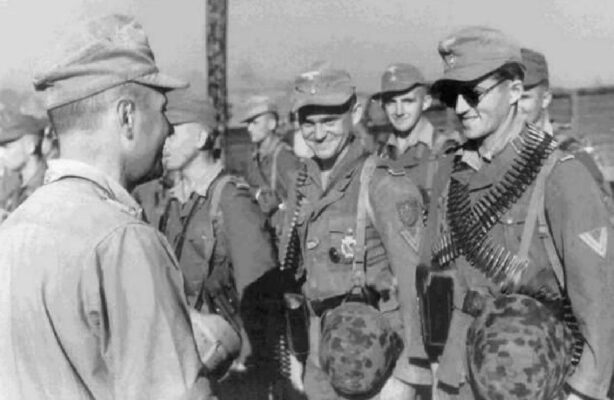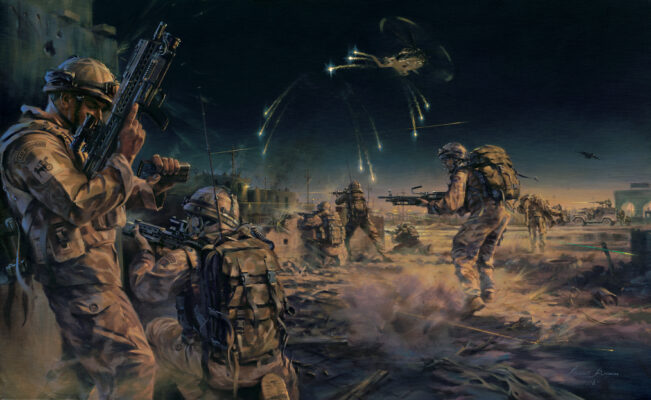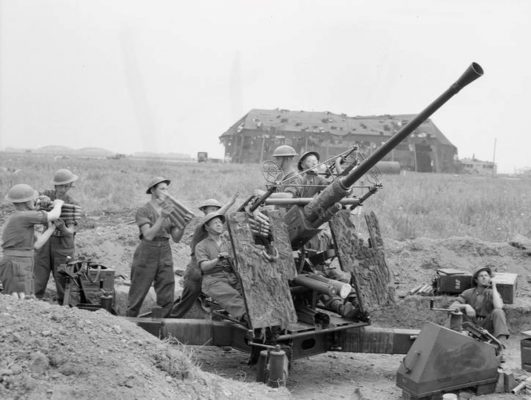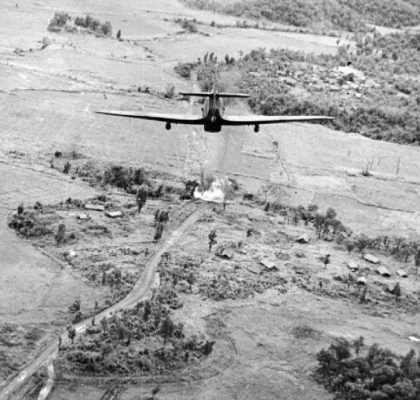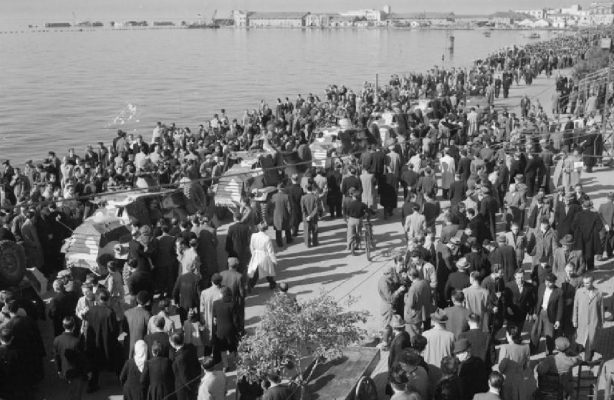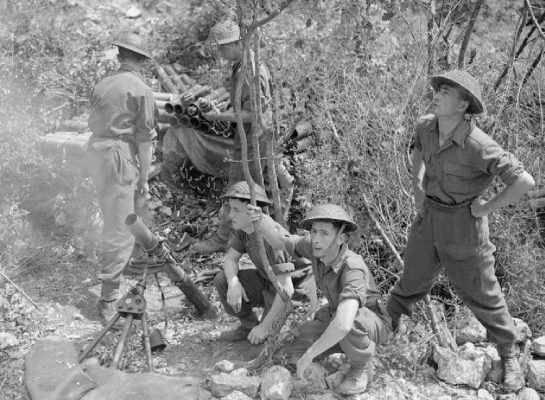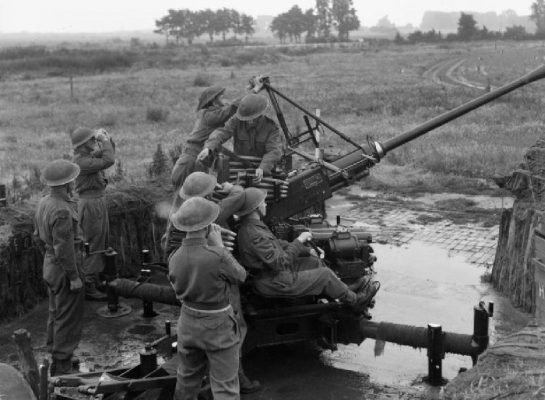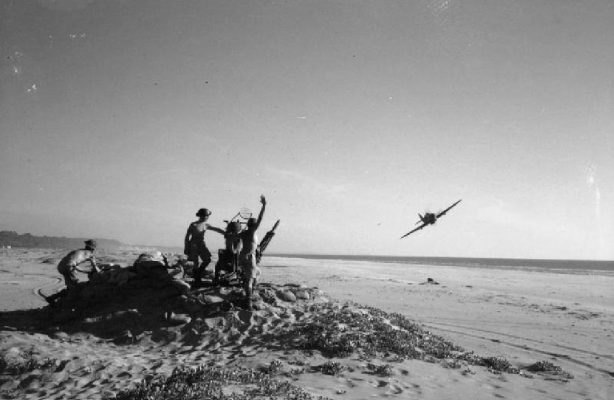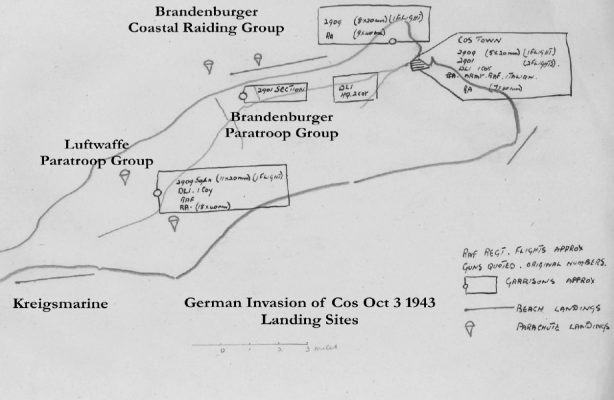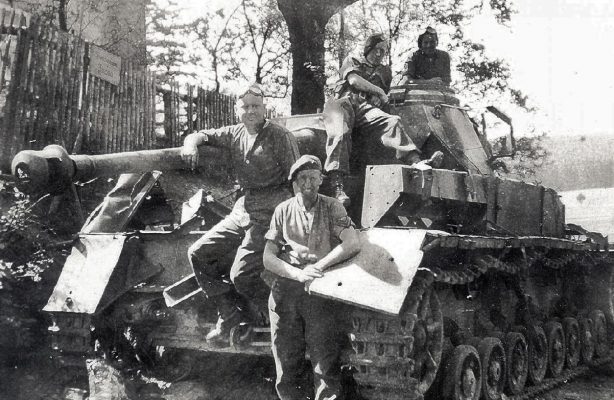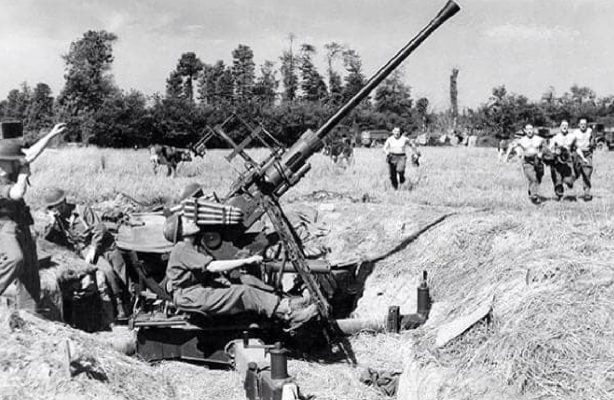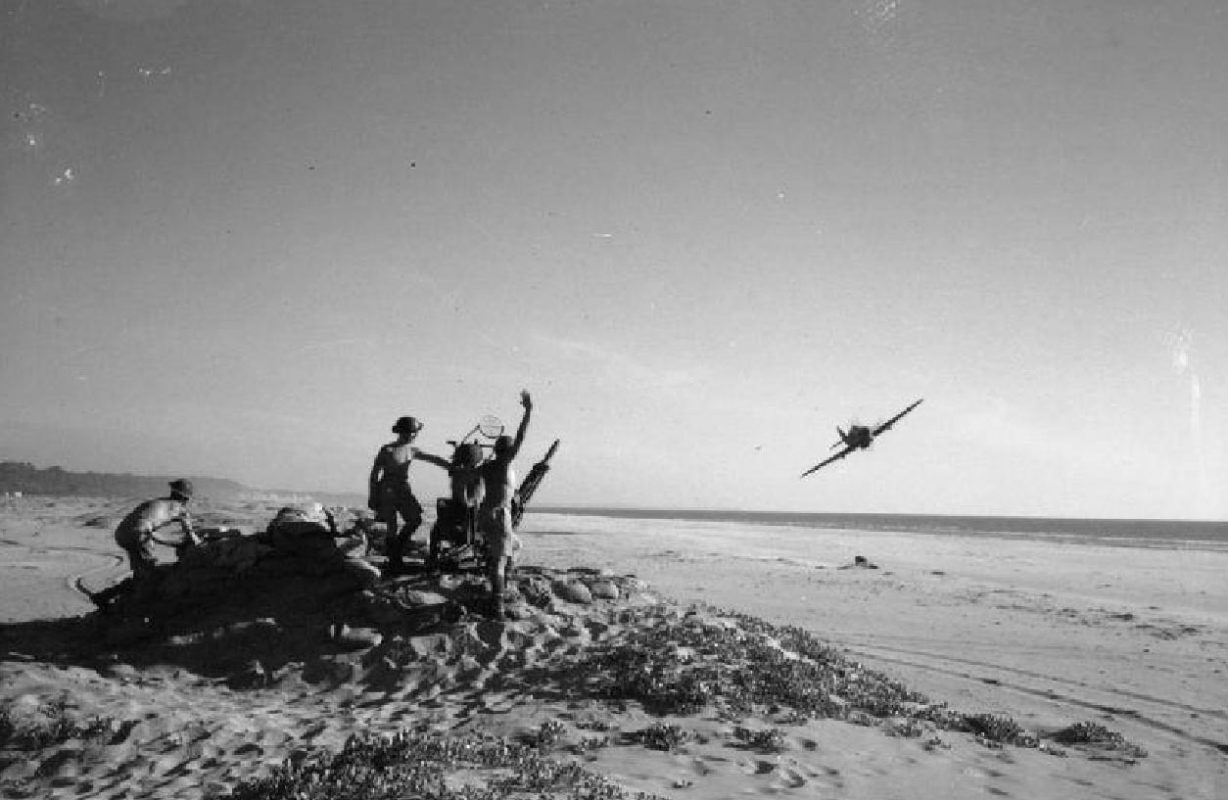
By December 1944 the XIVth Army was across the Chindwin River preparing for what the Japanese General Kimura termed “the battle of the Irrawaddy shore” as part of his plan for the defence of Mandalay.
Kimura had concentrated the bulk of his forces to defend Mandalay in the belief that it was to be attacked by the whole of the British XIVth Army.
This was, in fact, the result of an elaborate deception plan by General Slim to draw the Japanese armies to the north, while delivering the main attack by crossing the river further south and striking at Meiktila, the Japanese communications and administrative centre in Burma.
It was a brilliant example of the indirect approach and the result of the British plan was to enable XIVth Army to take Meiktila and drive south to capture Rangoon before the monsoon broke in May 1945.
THE SEIGE
At the end of February 1945 the 17th Indian Division struck at Meiktila and after hard fighting against a last-ditch Japanese defence the town was cleared and the airfield captured on 5 March. General Kimura thereupon ordered his 33rd Army south to recapture Meiktila and the rapid concentration of enemy units severed the British supply lines and isolated the British and Indian troops in Meiktila.
The only solution to that was to both reinforce and resupply the garrison by air, for which use of the airfield at Meiktila East was now essential. Wing Commander Michael Lander’s 1307 Wing, consisting of 2708 Field Squadron supplemented by flights from 2941 and 2968 Field Squadrons and 2963 LAA Squadron, was flown in to Meiktila from Agartala on 6 March and placed under command of 99 Brigade.
KEEPING THE AIRFIELDS OPEN
After taking up positions between Gurkha and Rajput companies within the defensive box overlooking the airfield, and digging their bunkers, the Regiment began patrolling the following day.
It was necessary to sweep the airfield every morning and to ensure that it was clear of the enemy before aircraft could begin flying in supplies and taking out casualties. At the end of each day all personnel and equipment had to be withdrawn into the box and preparations made for standing and fighting patrols to be sent out after nightfall. 2708 Squadron’s 3″ mortar flight was absorbed into the brigade artillery line and carried out fire tasks in conjunction with Army field guns and medium mortars.
After several days and nights of constant patrol activity, Japanese artillery opened intensive fire on the box on 15 March. This closed the airfield and, during the barrage of 75mm and 105mm shells, a direct hit on a 2941 Squadron bunker caused several casualties. The enemy guns were eventually silenced by airstrikes and the airfield reopened for flying until darkness fell. Japanese infantry attacked the box during the night but were repulsed and, unknown to the defenders, took up positions on the airfield to await the morning sweep by 2708 Squadron.
As two Regiment flights moved out of the box and into the open, two companies of enemy infantry opened fire from concealed positions on the airfield. Despite the strength of the opposition, the Regiment force pushed the Japanese back several hundred yards during a running fire fight. Flying Officer Furlong’s flight was fortuitously reinforced by Flying Officer Kelly’s flight, which was returning to base after mounting an overnight standing patrol beyond the airfield, but Flight Sergeant Norman Gerrish’s flight was pinned down by enemy fire.
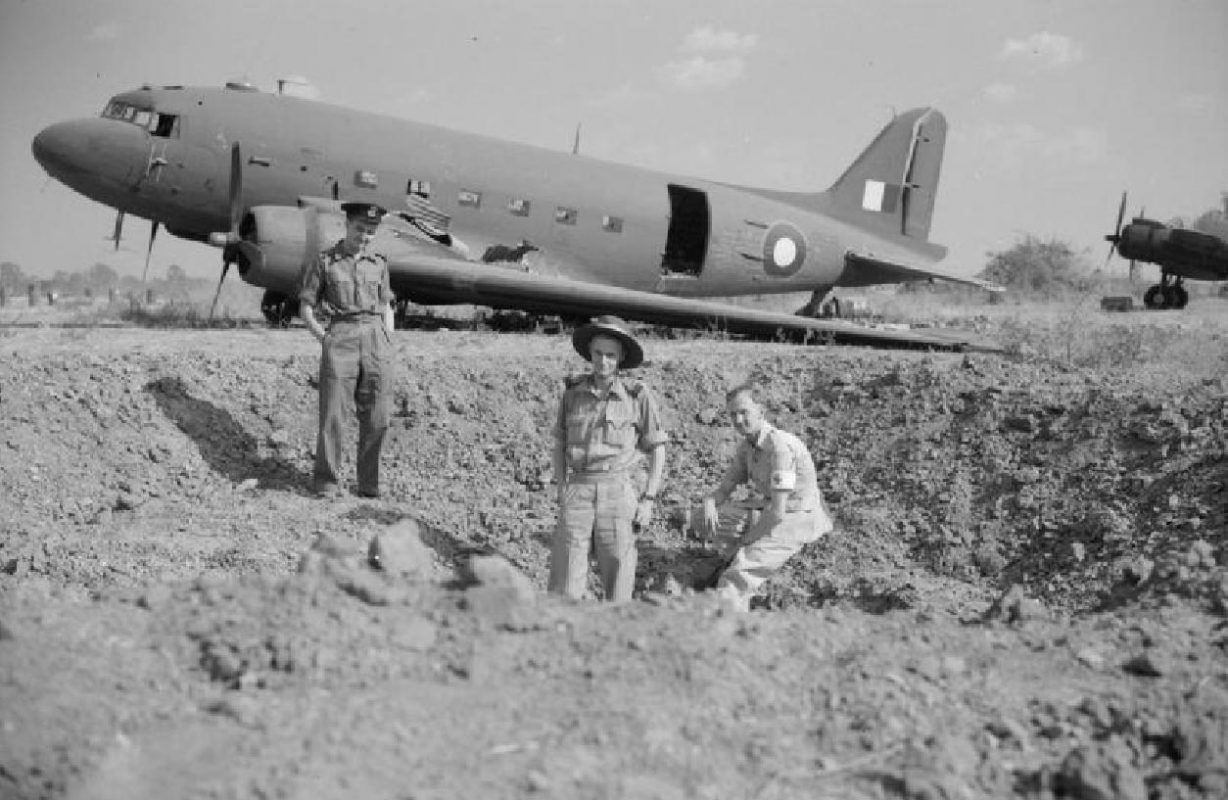
NORMAN GERRISH
Despite being wounded, Gerrish seized a Bren gun and gave covering fire to enable his men to withdraw and when he ran out of ammunition he picked up another Bren and continued firing to keep the enemy’s heads down. When all his men had disengaged and reached safety, he walked calmly across open ground in full view of the enemy to rejoin his flight. The action had lasted for two hours, by which time a counter-attack force of tanks and two companies of infantry were assembled to reinforce the Regiment and the combined force cleared the enemy from the surrounds of the airfield. 2708 Squadron’s casualties in this action were seven killed and eight wounded, but the Japanese left 150 of their dead and wounded behind.
Surprisingly, Gerrish was not awarded the Distinguished Conduct Medal for which he had been strongly recommended, but received the lesser award of the Military Medal instead.
LEADING FROM THE FRONT
Michael Lander was tireless in commanding his Wing and in setting a personal example to his officers and men. He insisted on leading from the front by participating in patrolling and in the daily sweeps of the airfield. It was while leading the morning sweep on 24 March that he and his runner, LAC Dakers, while ahead of the supporting flights, were both killed by enemy snipers. It was not until the Japanese were finally driven back from Meiktila that Flying Officer Kelly, Corporal McKenzie and LACs Bartlett, Finch and Hooson, were able to recover the bodies of Wing Commander Lander and LAC Dakers and give them temporary burial on the battlefield on 30th March. During the fighting 2708 Squadron had lost nine men killed in action, and 2963 Squadron a further four, in addition to many more wounded who were evacuated by air.
What was noteworthy about the Regiment’s action at Meiktila was that the units involved had landed in India two months previously after a long sea voyage from the UK and had been sent directly into action only two days after completing their training at the forward echelon of the Depot at Agartala. The results reflected very favourably on the quality of the officers and airmen, some of whom were primarily anti aircraft gunners, their training and combat skills, and the inspiring leadership of their Wing Commander.
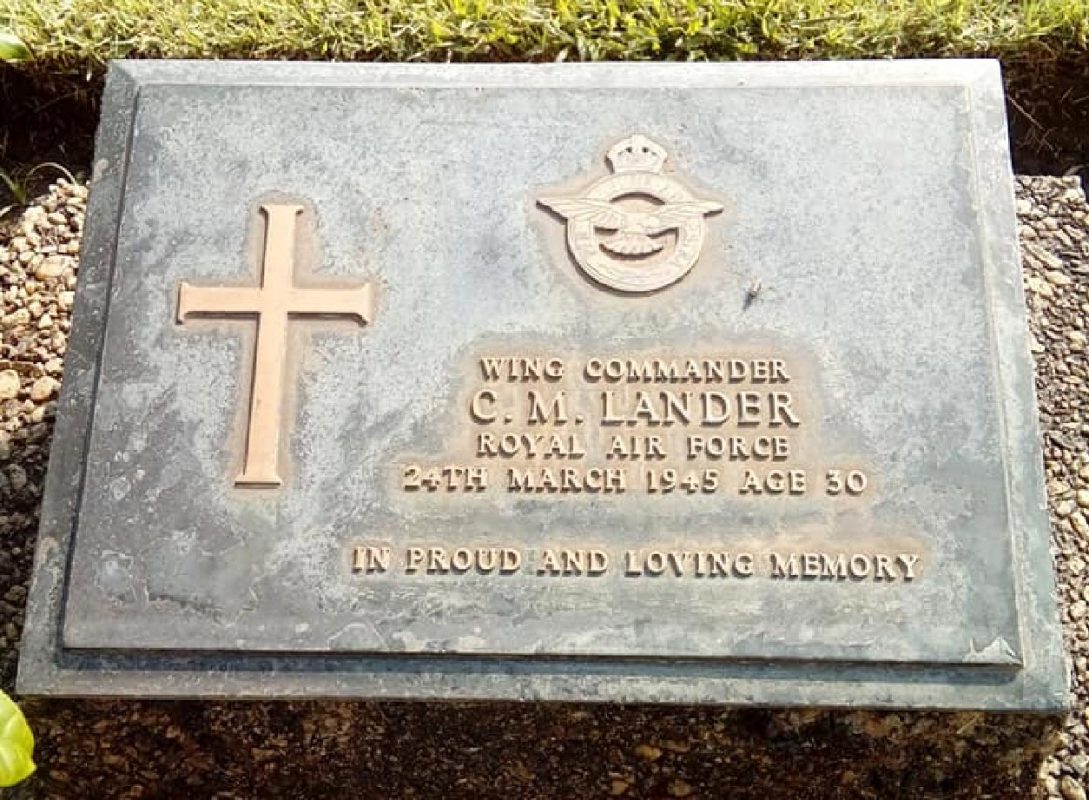
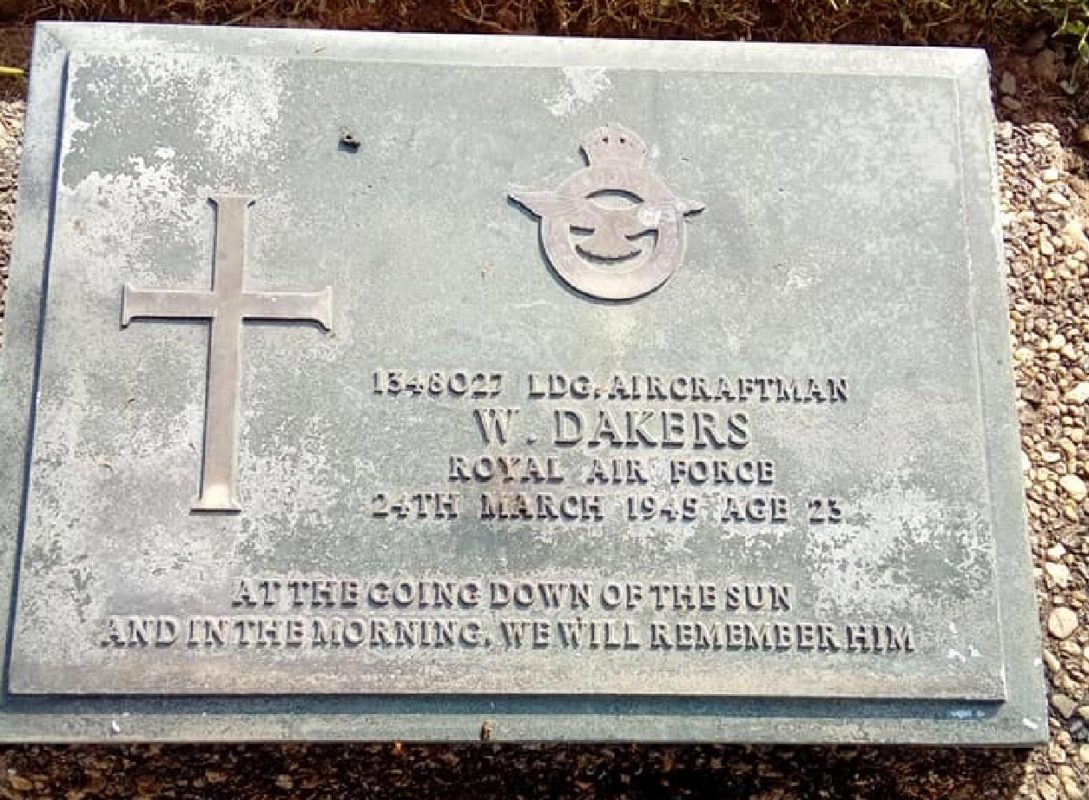
ONDAUK AIRFIELD
The forward airfield at Ondauk was under constant threat from Japanese attack, which was kept at bay by the energetic patrol activity of 2945 Field Squadron until, in the early hours of 8 March 1945, the redoubtable Captain Inane and his Butai, disguised as Burmese peasants, reached the outskirts of the airfield. Surprised by a patrol from 2945 Squadron, led by Flight Lieutenant Hollingdale, a brief but intense fire fight followed and the intruders left an officer’s pack and sword, radios, arms, ammunition and demolition charges on the bloodstained ground as they fled into the jungle taking their dead and wounded with them, among whom, it was hoped, might have been Captain Inane. One Japanese soldier was taken prisoner but when he attempted to escape he was shot and killed. Regiment casualties were one airman killed and three wounded.
In any event, this was the last attempt made by the enemy to infiltrate saboteurs onto an airfield. Sweeping south from Mandalay, the divisions of 33 Corps linked up with those of 4 Corps at Meiktila and continued to advance south on two axes, one along the Irrawaddy towards Mingaladon and Rangoon, the other along the Sittang to Toungoo and Rangoon. As a result, most of the Japanese 28th Army was trapped between the Irrawaddy, in the lower reaches of the Arakan, and the rugged mountains of the Pegu Yomas, from where the only escape to safety was towards the Japanese-held Shan hills to the east.
TOUNGOO AIRFIELD
The airfield at Toungoo was soon operational with two RAF fighter squadrons, and Squadron Leader Charles Killeen, wearing the hats of OC 2759 Field Squadron, acting OC 1307 Wing and Toungoo area defence commander, was responsible for blocking the enemy’s escape routes to the north and south of the airfield. 2759 and 2964 Field, with 2963 and 2965 LAA Squadrons in the field role, mounted over eighty fighting patrols in appalling weather conditions and inflicted numerous casualties on the demoralized Japanese troops whose sole objective was to make their way to safety. At this point the GOC 19th Indian Division ordered 1307 Wing to send a fighting patrol to deal with a platoon of enemy troops who were reported to be in the area of Tabetgwe, some twenty miles west of Toungoo.
ON THE OFFENSIVE
Although 2759 Squadron was selected for this operation, most of the squadron’s officers had been detached to support operations in the Arakan and the attack on Ramree Island, so the task of leading the patrol fell to a junior NCO.
Corporal Alex Miller, with Corporal Doverty as his deputy, and eighteen airmen from 2759 Squadron set off into the jungle for a ten-day patrol, mounted on fourteen elephants, ten of which each carried two airmen, with the remainder carrying ammunition, rations and supplies. It was the height of the monsoon season, the ground was waterlogged, the rivers and streams were overflowing and rain still fell steadily from the low dark clouds.
Establishing a patrol base at Shwekaung Ywathit, the patrol mounted attacks on two Japanese positions over the next two days, killing over twenty of the enemy, most of whom were sheltering from the weather in makeshift bashas, and seizing considerable quantities of arms and ammunition. Searches for enemy personnel who had been wounded, or escaped, revealed only dead bodies, the Japanese survivors having killed themselves with their own grenades rather than surrender.
The sortie was successful in clearing a large area of the enemy, re-establishing a British presence among the local inhabitants and removing a potential threat to aircraft operating from Toungoo airfield. The patrol returned without loss, the only untoward incident occurring on the last night when one of the elephants was bitten by a snake and collapsed while fording a river. LACs Currie and Dixon were pitched into the fast-running water and had to make their own way back to the squadron base, ten miles away, on foot in the dark, leaving a dead elephant and its grieving mahout on the river bank.
The Regiment wings and squadrons had moved through Burma on two principal axes: one with 224 Group along the coast from Maungdaw to Akyab, Ramree Mingaladon and Rangoon; the other with 221 Group through central Burma from Ondauk to Mandalay, Meiktila, Toungoo and Pegu to Rangoon. Their primary task was to secure and defend the forward airfields from which the RAF provided air support to the Army; on over thirty occasions squadrons moved from one to the next by air, in other cases it took somewhat longer to move by road.
ACKNOWLEDGEMENT
General Slim, commander of XIVth Army, acknowledged that his Army’s success was due to the superb support which it had received from the RAF, and, in his turn, Air Vice-Marshal Vincent, AOC 221 Group, made it clear that his ability to provide the best possible air support for the Army had depended on the reassuring levels of defence which his Regiment Field and LAA Squadrons provided for his airfields and forward radar installations, which were always sited far forward and close to the front line, and sometimes ahead of it. The value of the contribution made by the Regiment to air operations was subsequently confirmed by the AOC-in-C, Air Chief Marshal Sir Keith Park, in his final report on the campaign in South-East Asia.
THE CAPTURE OF RANGOON
The capture of Rangoon was planned on the basis of a pincer movement, with a land assault by 17th Division from the north and an amphibious landing (Operation Dracula) by 26th Division from the south. The Regiment’s contribution to Dracula was 1327 Wing with 2959 LAA and 2967 Field Squadrons under command. Embarking at Akyab and Ramree, the landings were made at Elephant Point, fifteen miles south of Rangoon, in early May, just as the monsoon broke.
By this time, the remaining troops of the Japanese 28th Army had taken refuge in the mountains of the Pegu Yomas and the area had to be cleared to remove any remaining threat to the re-establishment of civil administration throughout Burma. 1307 Wing, with five squadrons under command, was detached to General Tuker’s 4 Corps which was tasked to deal with the break-out of the 18,000 enemy troops left in the Pegu Yomas. The main Japanese escape routes lay through 17th Division’s area of responsibility, where 1307 Wing found itself operating alongside old friends from Meiktila and Toungoo days. The exhausted, and often starving, Japanese troops suffered over twelve thousand casualties in their attempts to escape; the total British losses were under a hundred killed and just over three hundred wounded.

